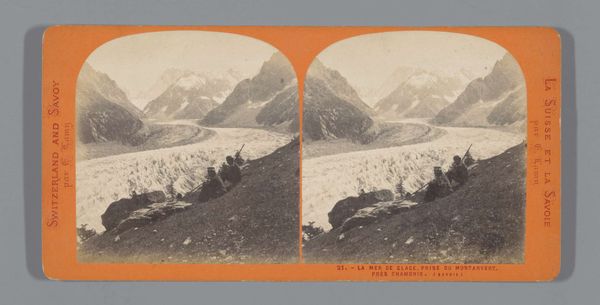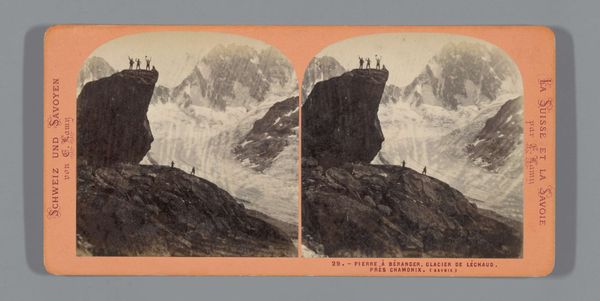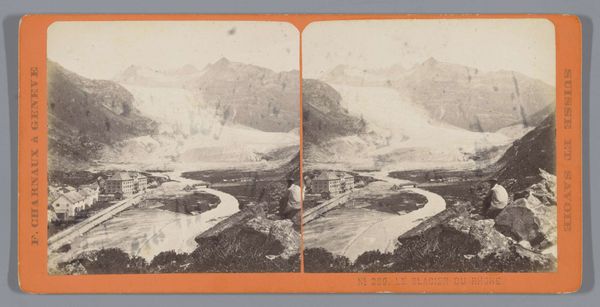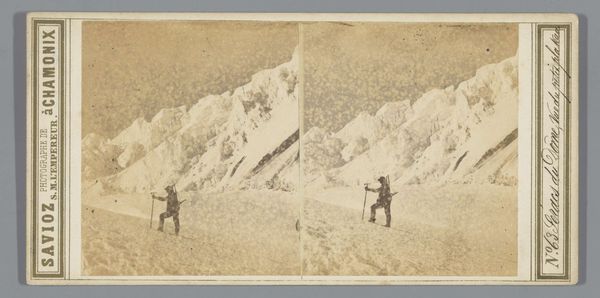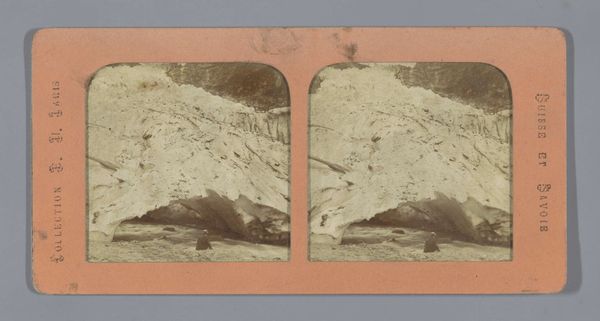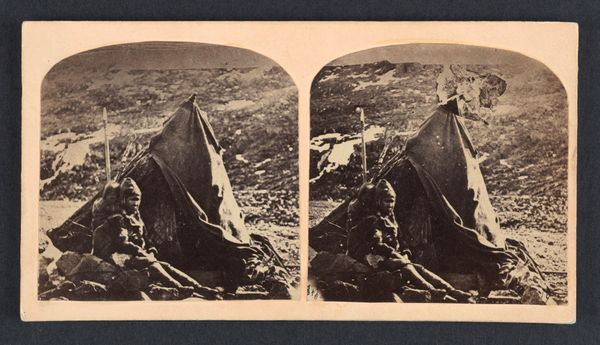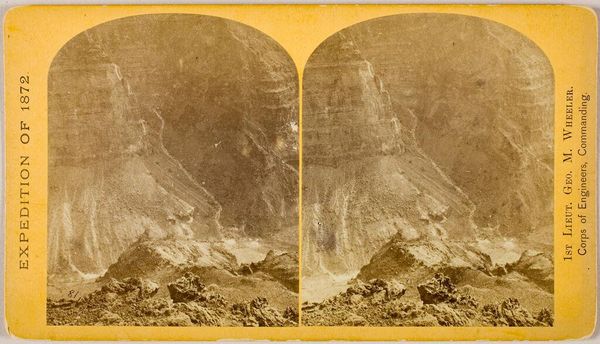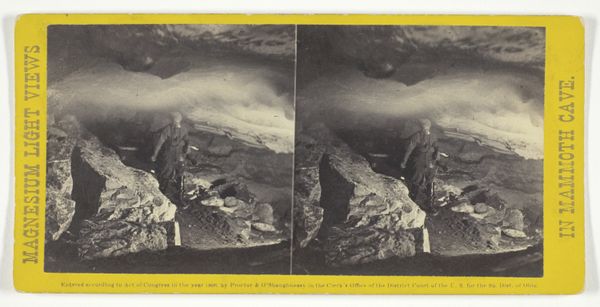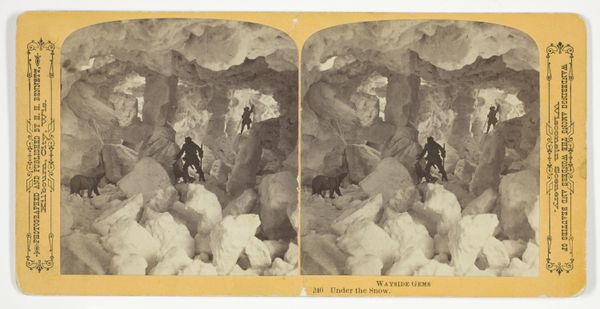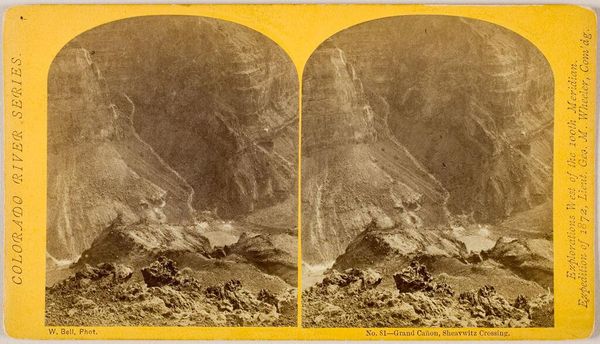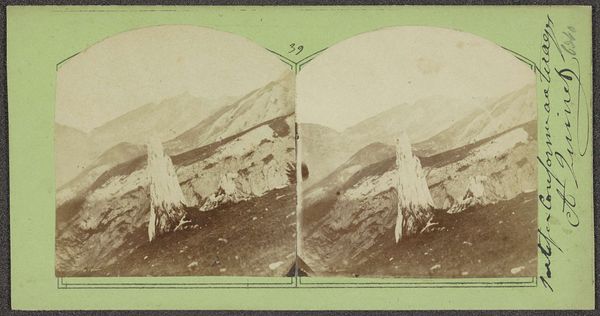
Gezicht op de gletsjer van de Gaisberg, gezien vanaf Hohe Mut, nabij Gurgl in het Ötztal 1869
0:00
0:00
Dimensions: height 87 mm, width 178 mm
Copyright: Rijks Museum: Open Domain
Ernest Eléonor Pierre Lamy produced this stereoscopic photograph of the Gaisberg glacier in the Ötztal Alps. This would have been achieved by a camera with two lenses, mimicking the binocular vision of the human eye. This method of production gave viewers an immersive, three-dimensional experience, a novelty in the 19th century. The albumen print, made from egg whites and silver salts, gives the image its warm, sepia tone and finely detailed surface. Photography, especially stereoscopic imagery, democratized access to landscapes previously only seen by intrepid travelers or rendered in paintings for the elite. Its rise paralleled the growth of tourism and leisure travel. These photographs became a form of mass consumption, a way for people to experience the sublime and the exotic from the comfort of their homes. Looking at this photograph today reminds us that the materials and processes used in creating an image influence its meaning and significance, challenging us to consider photography not just as art, but also as an important part of social and cultural history.
Comments
No comments
Be the first to comment and join the conversation on the ultimate creative platform.
